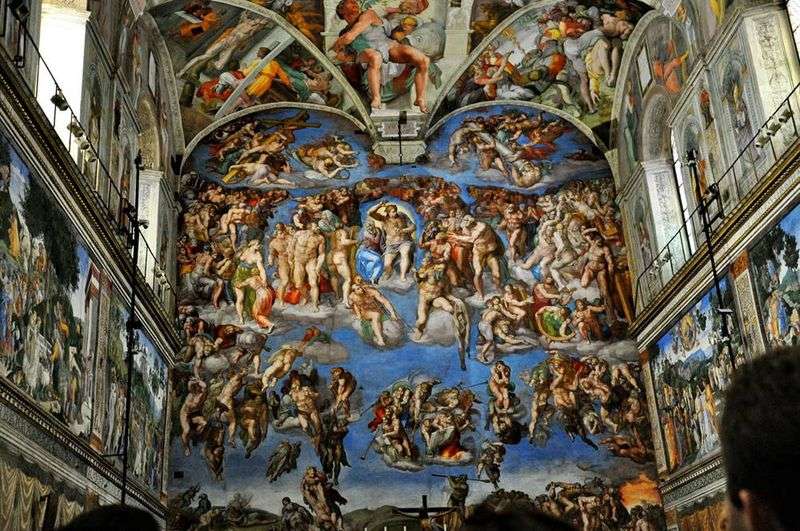
Fresco by Michelangelo Buonarroti “Last Judgment”. The size of the painting is 1370 x 1220 cm. The greatest pictorial work of Michelangelo from the second quarter of the 16th century was the Last Judgment, a huge fresco on the altar wall of the Sistine Chapel. The religious theme of Michelangelo embodies as a human tragedy on a cosmic scale.
The great avalanche of mighty human bodies – ascended righteous and sinners plunged into the abyss, Christ who creates the court, like a thunderhawk cursing the evil in the world, full of anger martyrs, who, pointing to the tools of their torment, demand retribution for the sinners – all of this still full of rebellious spirit. But although the theme of the final judgment itself is intended to embody the triumph of justice over evil, the fresco does not carry an affirming idea – on the contrary, it is perceived as an image of a tragic catastrophe, as an embodiment of the idea of the collapse of the world. People, in spite of their exaggeratedly powerful bodies, are only the victims of a whirlwind raising and overthrowing them.
It is not for nothing that such complete images of frightening despair are found in the composition, like Saint Bartholomew, holding in his hand the skin torn off from him by tormentors, where instead of Saint Michelangelo’s face he depicted his own face as a distorted mask. The compositional solution of the frescoes, in which, in contrast to the clear architectonic organization, the elemental element is emphasized, is in unity with the ideological plan.
The individual image dominated previously by Michelangelo is now captured by the common human flow, and in this the artist takes a step forward in comparison with the self-sufficiency of the individual image in the art of the High Renaissance. But, unlike the Venetian masters of the late Renaissance, Michelangelo still does not reach the degree of interconnection between people, when an image of a single human collective arises, and the tragic sound of the images of the “Last Judgment” only intensifies from this. New for painting by Michelangelo Buonarroti and his attitude to color, which he acquired here is incomparably greater than before, figurative activity. The very comparison of naked bodies with a phosphorescent ashen-blue sky tone itself brings a sense of dramatic tension to the fresco.
Above the fresco “The Last Judgment”, the artist Michelangelo placed the image of the Old Testament biblical prophet Jonah, who has some allegorical relation to the religious theme of the apocalypse. The ecstatic figure of Jonah is located above the altar and below the stage of the first day of creation, to which his gaze is turned. Jonah is the forerunner of the Resurrection and Eternal Life, for he, like Christ, who spent three days in a tomb before ascension to heaven, spent three days in the belly of a whale, and then was brought back to life. Through participation in the Mass at the altar wall of the Sistine Chapel with the grand fresco “The Last Judgment”, the faithful received communion to the mystery of the salvation promised by Christ.
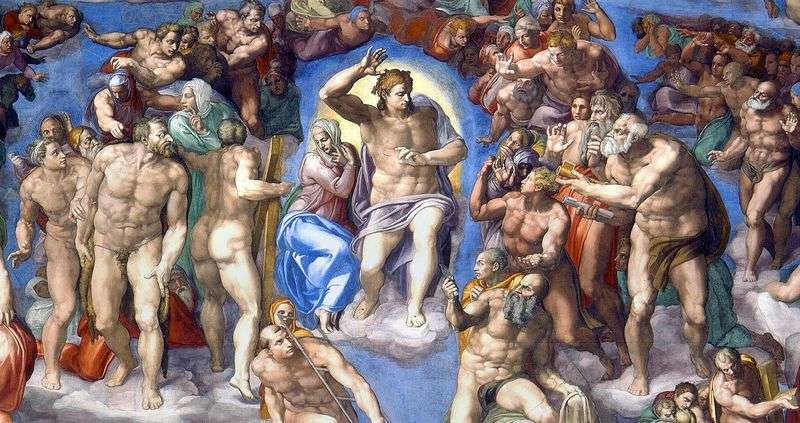 The image of Christ on the fresco The Last Judgment by Michelangelo Buonarroti
The image of Christ on the fresco The Last Judgment by Michelangelo Buonarroti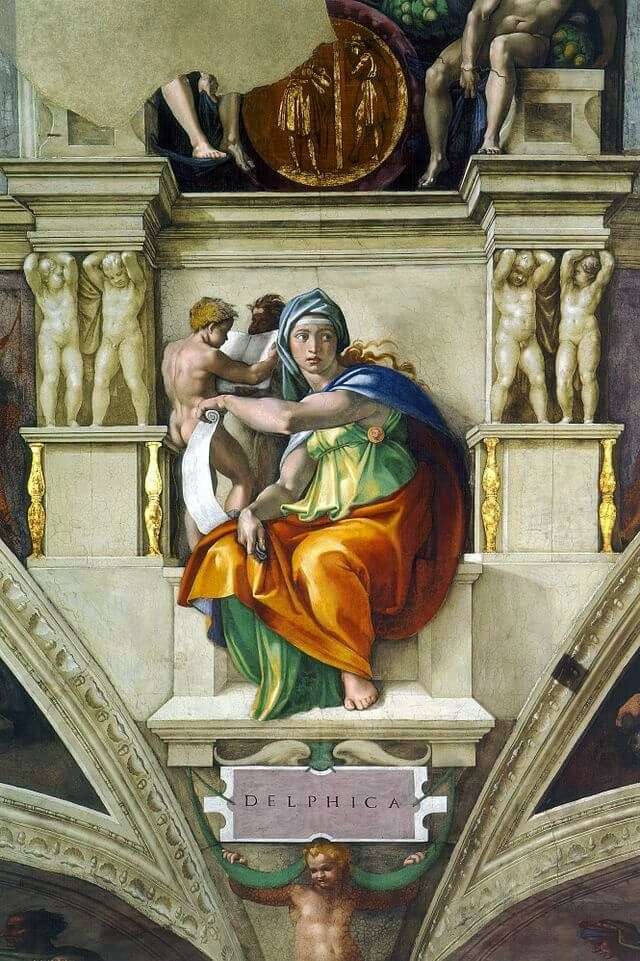 The Delphic Sibyl by Michelangelo Buonarroti Buonarroti
The Delphic Sibyl by Michelangelo Buonarroti Buonarroti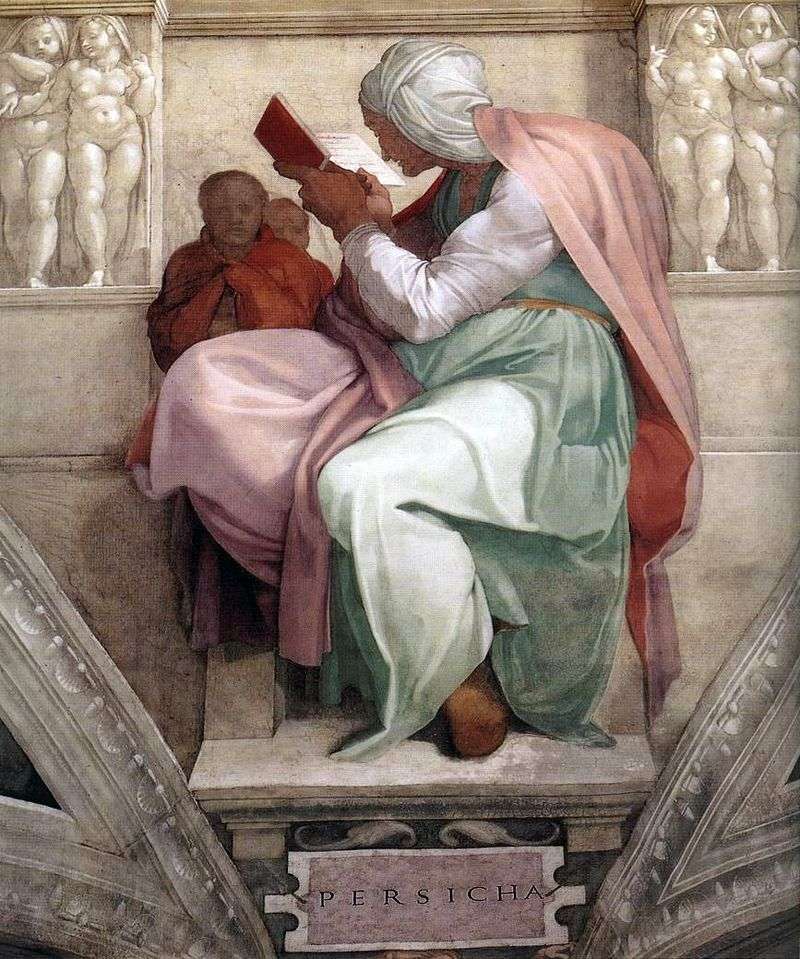 Persian Sibyl (fresco) by Michelangelo Buonarroti
Persian Sibyl (fresco) by Michelangelo Buonarroti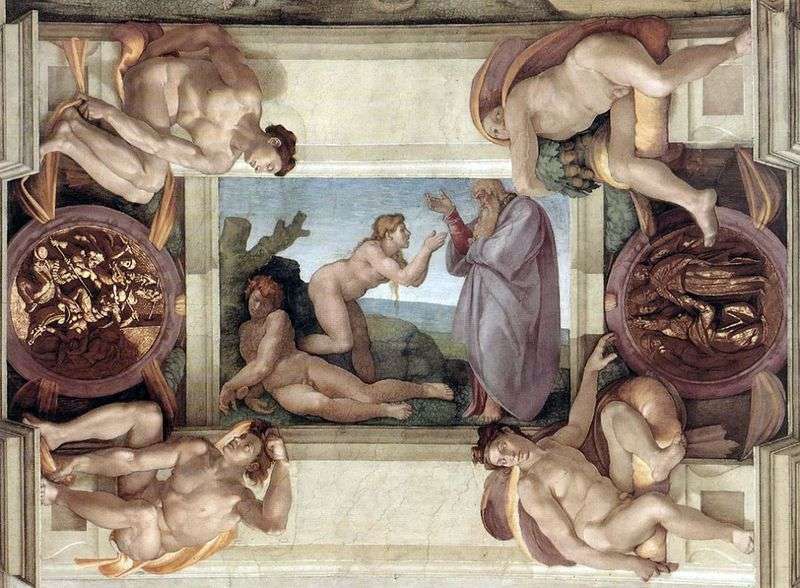 The Creation of Eve by Michelangelo Buonarroti
The Creation of Eve by Michelangelo Buonarroti Zechariah by Michelangelo Buanarrotti
Zechariah by Michelangelo Buanarrotti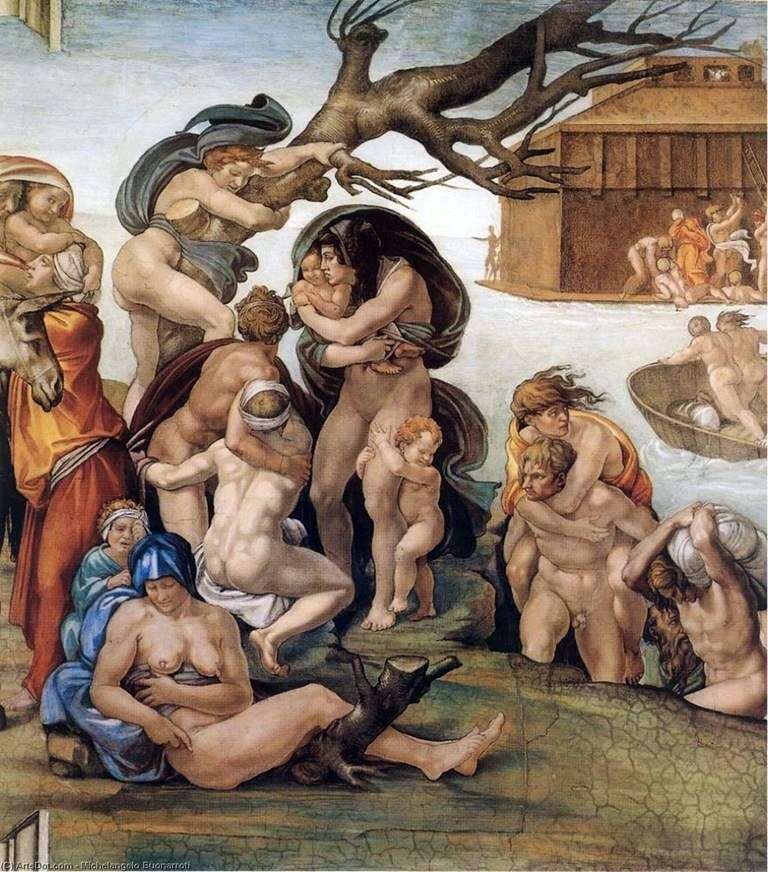 Flood, a fragment of the painting of the Sistine Chapel (fresco) by Michelangelo Buonarroti
Flood, a fragment of the painting of the Sistine Chapel (fresco) by Michelangelo Buonarroti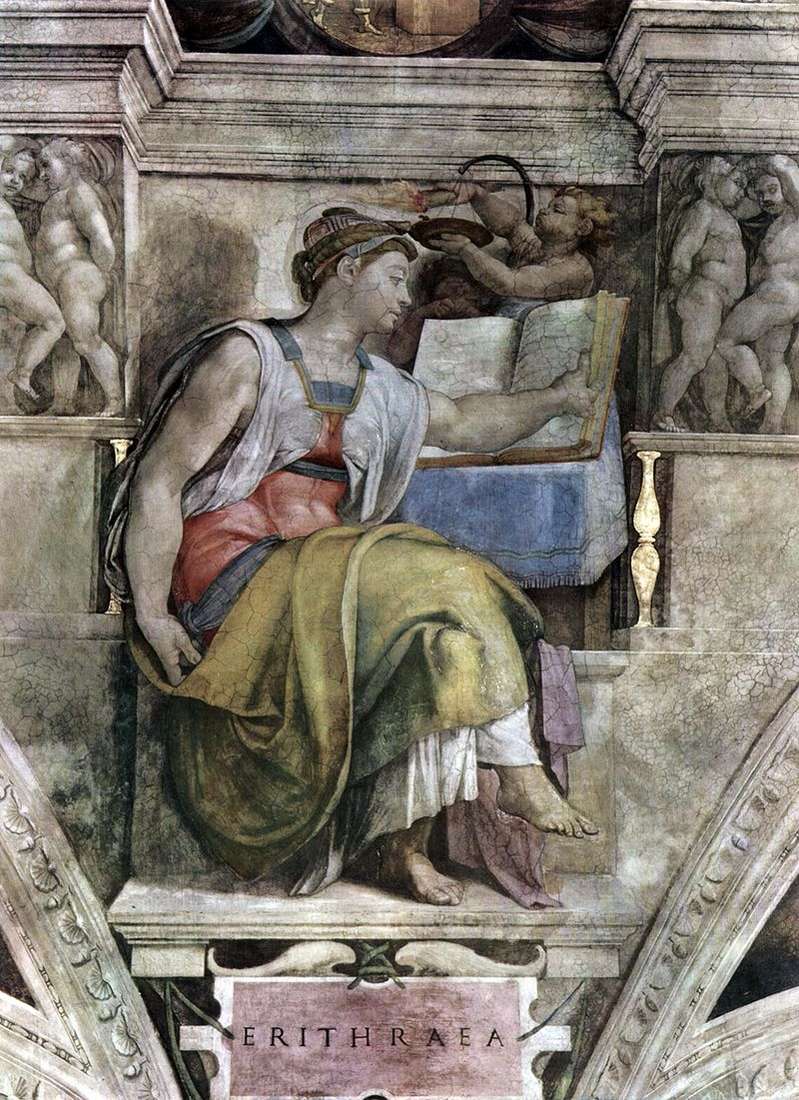 Eritrean Sibyl (fresco) by Michelangelo Buonarroti
Eritrean Sibyl (fresco) by Michelangelo Buonarroti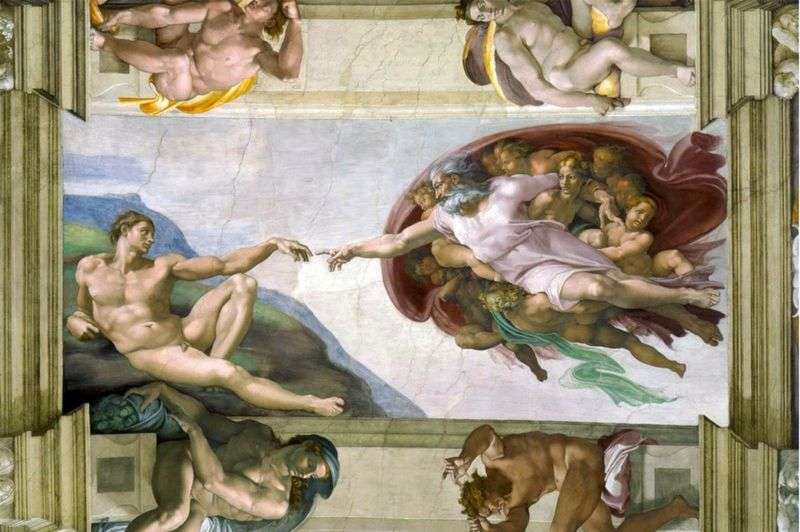 The Creation of Adam by Michelangelo Buonarroti
The Creation of Adam by Michelangelo Buonarroti